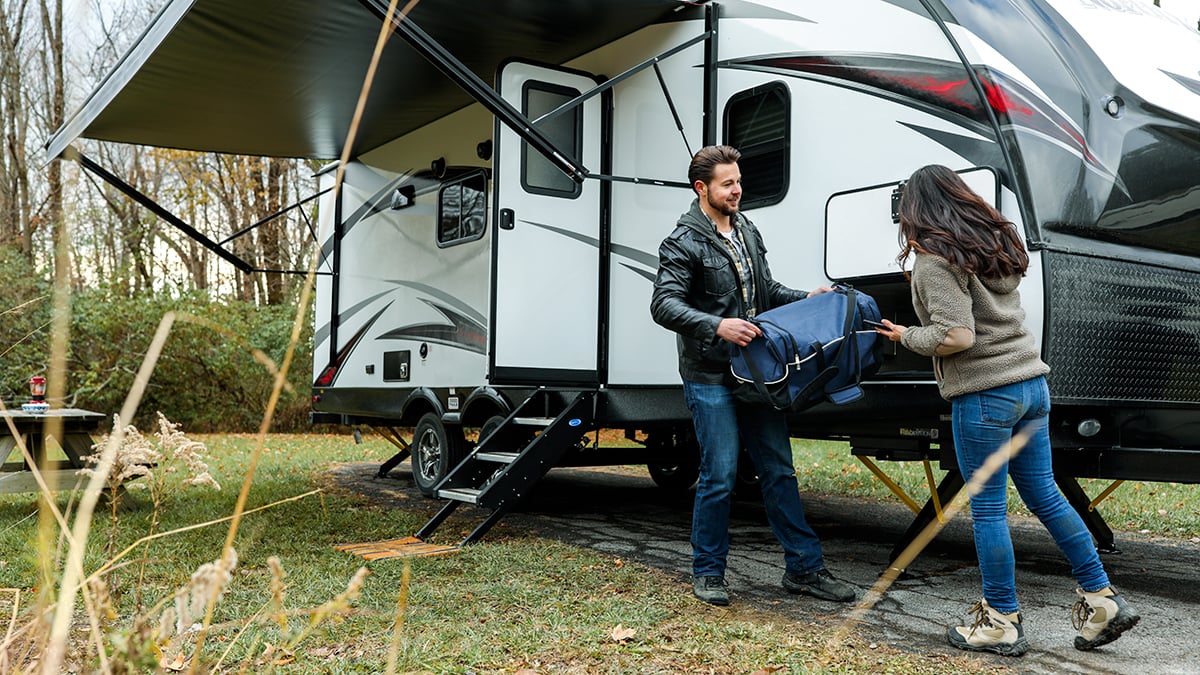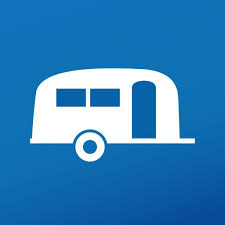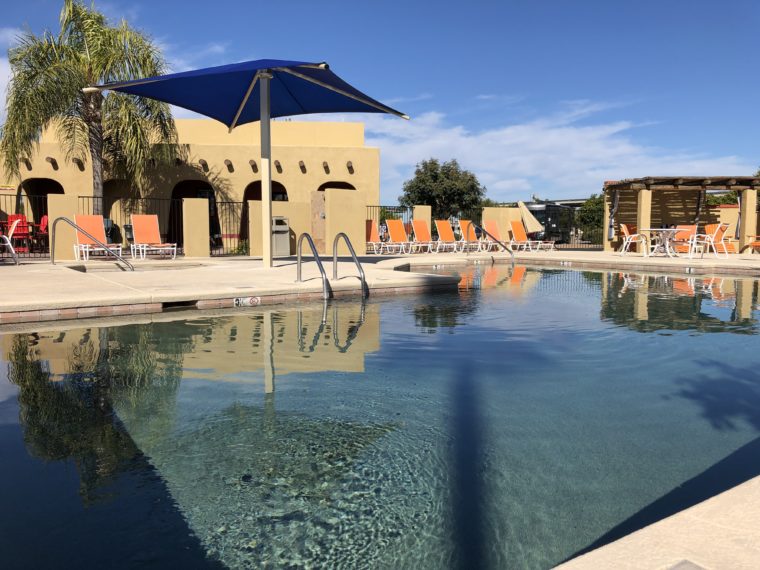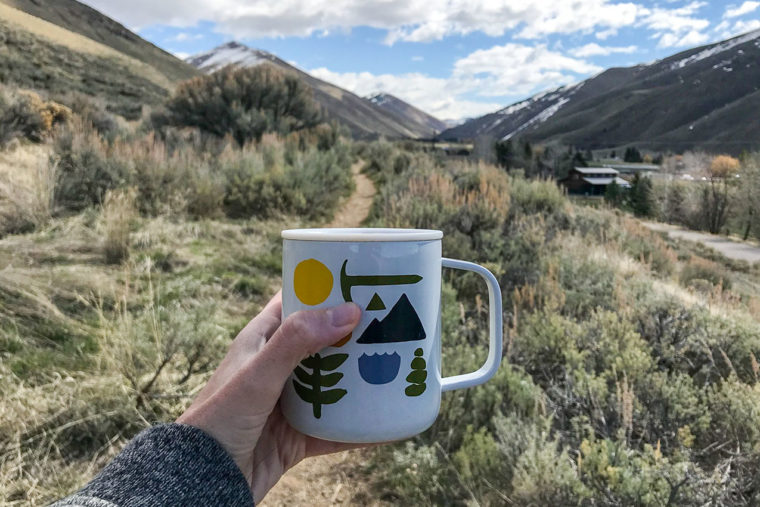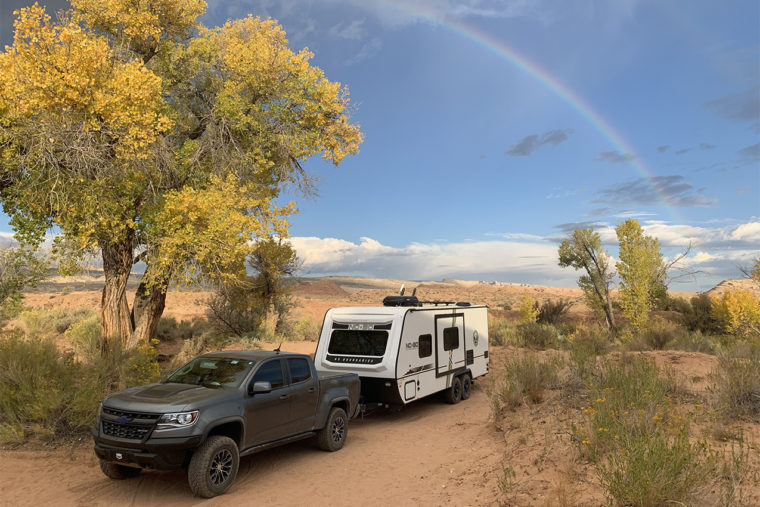Whether you’re a first-timer or a pro, packing your RV takes some forethought and planning. And even though it might seem like your RV has endless shelves, cabinets, and nooks and crannies, you’ll soon find that space is limited. To help make the most of your RV’s space, this RV packing checklist includes a few dos, don’ts, tips, and tricks to get you started.
Remember to space your heavy items throughout the RV to avoid weighing down one side of the rig. Do this both from front to back and side to side. Staying as light as possible is important to keep your rig under the necessary payload and towing capacity limits.
In this article:
- Documents and important info
- Electronics
- RV toolbox
- Water
- Bathroom
- Hygiene and health
- Clothing and linens
- Camping gear
- Entertainment
- Kitchen essentials
- Packing for kids
- Checklist
Documents and Important Information
When it comes to bringing along your important information, think about anything you might need to have documentation of while on the road. Your vehicle registration, campground reservations, and roadside assistance info, and all of your RV and camping packing lists should be kept in a folder for easy access.
You’ll also need IDs and driver’s licenses, your RV manual (or access to a digital copy), your RV’s maintenance history, and any relevant medical documents or other personal items.
Store your documents in a safe place, away from any moisture or excessive temperatures. A waterproof folder is ideal for keeping your documents dry and reduces exposure to humidity. Some RVers also use a clipboard or notebook when walking through their setup and breakdown checklists to mark their progress.
Make multiple copies of your important documents before you leave on your trip and keep the originals in a safe place.
Electronics
Adapters and Chargers
To start, remember to pack your electrical adapters. This goes for your phones, tablets, and computers as well as the bigger things, like 20-, 30-, and 50-amp adapters and cords for shore power. Also, throw in some electrical tape, a digital voltmeter/multimeter to check your battery, and a digital line monitor to test faulty wiring and monitor your AC voltage and generator frequency. It’s a good idea to pack a surge protector and extra fuses as well. (Find information about fuses in your RV owner’s manual.)
Lighting
It can get dark when the campfire starts to lose steam. Be sure to bring flashlights, lanterns, headlamps, and any extra lighting you can for inside and outside the RV at night. Adequate lighting is not just a convenience, it’s a basic safety measure and a necessity. That also goes for bringing extra batteries and a charger for rechargeables.
Generator
If you plan on using a generator or have one in your RV, make sure you check it prior to departure and bring along any necessary cords or replacement parts. If you’re getting energy from a solar panel system, bring all the necessary parts and replacements for that as well.
RV Toolbox
You’ll need both an emergency roadside safety kit and an RV toolbox for repairs on the go. This is where you will keep all of the essential tools you need to maintain your RV on the road. Many of these items are similar to what you need with a car or home, like a hammer, screwdriver, duct tape, jumper cables, and a tire pressure gauge. Other useful essentials include leveling blocks, wheel chocks, roof patches, and sealant.
Tools of the Road: Essentials for Your RV Toolkit
RV Tool Storage Tips
Storing your mechanical equipment can be a little tricky considering the space constraints of an RV. Don’t place tools next to containers full of caustic fluids. Make sure to safely store all your vehicle fluids, like coolant and oil, in a waterproof, airtight container or bin to avoid nasty spills. If you have exterior storage on your RV for tools and equipment, use it. If not, try to keep all of your tools organized neatly in a large, sturdy toolbox or a few smaller toolboxes scattered around the RV for weight distribution. Make sure to keep them out of reach of any small children.
Checklist: How to Set Up and Break Down Your Campsite
Water
Unless you’re off to do some boondocking, it’s not advisable to travel with a full fresh water tank. That’s because an average 40-gallon tank will add an extra 334 pounds to the weight of your RV. So, pack water for the trip to make sure you have constant access to safe drinking water.
In addition to simply packing water, make sure to bring along any water filters you’ll need. A high-quality fresh water hose is a must to fill your fresh water tank when you get to your destination. A water pressure regulator is also highly recommended because the water from the RV campground might come out at very high pressure, which can cause damage to your RV. And be sure to check your water heater before you pack up and go.
If you’re traveling with cases of bottled water, keep them stored evenly across the RV and low to the ground.
Bring along some purifying powder for impure water. You never know when you might need it, and it’s always better to be safe than sorry.
Bathroom
Remember to pack your black water tank chemicals, sewer hose and attachments, and sanitation gloves. Before you leave on a trip, pour the black water tank chemicals into the toilet along with some water and a toilet deodorant. Each time you empty the tank, you’ll need to refill the treatment chemicals.
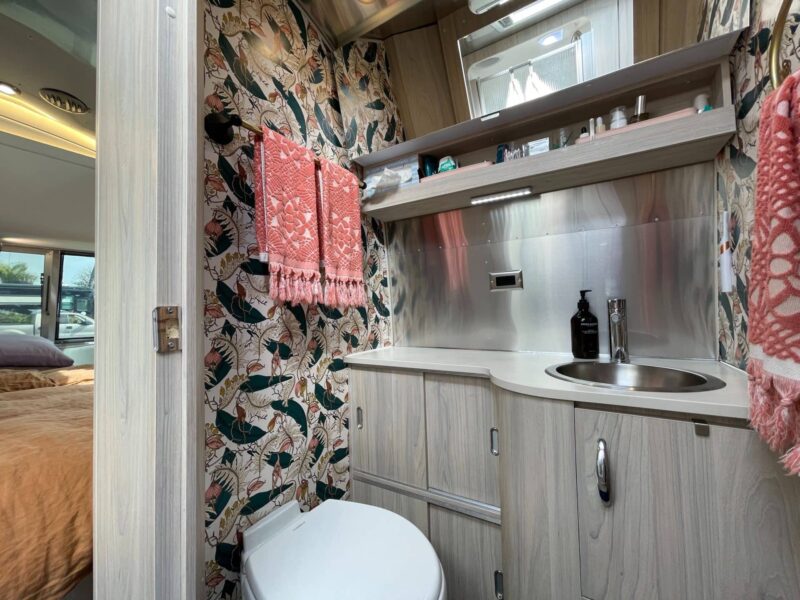
Also, make sure you have your RV toilet paper and disposable cleaning wipes to clean your toilet quickly and painlessly.
Purchase a shower head that’s made specifically for RV showers. This will not only help with conservation, but it also provides a steady stream of good water pressure for your showers.
Hygiene and Health
First and foremost, you need a high-quality first aid kit that will assist you in the event of any injuries during travel. Your first-aid kit should include antibiotic ointment, burn ointment, insect/animal bite treatment, gauze, bandages, scissors, and as many other essentials as you can fit. If you don’t have the time to amass your own kit, buy a pre-made one created specifically for camping. These kits are usually certified and include manuals to help you with basic care.
Your first aid kit should be stored somewhere accessible where the entire family knows where to find it. It should always be put back in its designated place after use so no time is wasted trying to find it in an emergency.
Just as important is bringing along all necessary medicines. Include things like a pain reliever/fever reducer, a thermometer, anti-nausea/anti-diarrhea/heartburn medication, any prescription medications, allergy medications, cough syrup, eye drops, and vitamins.
Make sure to bring along ample sun protection and aloe vera gel to soothe any burns. Don’t forget insect repellent, and consider packing a mosquito net for nighttime, especially if you’re traveling with children.
Keep in mind that strong-smelling shampoos, soaps, or perfumes attract all kinds of insects. Keep your hygiene products simple and odor-free whenever possible.
When it comes to maintaining your hygiene on the road, you’ll want to have most everything with you since campgrounds are light on amenities in this category. Try to find multipurpose toiletries to save on space and minimize additional weight. Consider having two of each item in your toiletry bag—one at home and one in the camper. That way, you don’t have to go through the hassle of moving everything back and forth.
Buy a few soft cases of various sizes for your hygiene products, like waterproof bags that close tightly so they can be stored in smaller spaces. If you pack all of your items in one big, sturdy bag, you’ll have a harder time stashing it in the precious space available. Your shower gear can be stored in your shower caddy or bucket and hung on your shower head, as long as it’s sturdy enough.
Clothing and Linens
What you bring in terms of wearables determines the ultimate comfort of your trip. A simple way to start packing your wearables is to list and imagine the different situations that could arise.
Wet Weather
Rain is a reality for any camper, and when you’re out in the middle of nowhere, appropriate rain gear can feel like a lifesaver. Make sure you bring rain boots, umbrellas, raincoats with hoods, and ponchos for those seasonal—and unexpected—storms.
Mud is a problem because it makes messes in your rig. Make sure to bring rags that you can use to wipe off boots, door mats to wipe your feet, extra socks, and clothes you don’t mind getting dirty.
Cold Weather
No matter where and when you’re traveling, you will want to prepare for the chance of chilly nights where you’re staying. Don’t forget a warm jacket, hats, gloves, thick socks, long underwear, and sweaters for those unexpected cold fronts. Extra blankets are also handy when sitting outside at the campfire.
Warm Weather
Hot weather can be just as much of an issue as cold. A sun hat, sunglasses, sun umbrella, and lightweight blankets for hot nights will help keep you comfortable and protected. Warmer weather also means packing your bathing suits and swim shoes. You can keep your RV cool with sun blockers and portable fans throughout.
Bedding and Pillows
Some people choose to just rely on sleeping bags even when they sleep inside; others prefer to bring classic bedding with sheets, comforters, and pillowcases. Whatever you do, make sure you bring enough pillows for everyone to feel comfortable no matter where they sleep. Think ahead to how you are going to wash and dry any large bedding that gets dirty during the trip.
Towels
As much as you want to pack lightly for your trip, you really can’t have too many towels. Make sure you bring hand towels as well as shower towels, pool towels, and clean-up towels or rags. Since you might not have a dryer available, having enough towels to get you through a rainy day or a family trip to the showers is essential for everyone’s comfort.
Camping Gear
Let’s talk about your tent. If you’re a newbie, you may be thinking, “I don’t need a tent, that’s the entire reason I bought an RV in the first place!” But many RVers find themselves pitching a tent now and then during their trips. It’s never a bad idea to bring one along if you have room.
Of course, if you plan on camping outside for one night or more, there will be some additional supplies that you will need to make your night peaceful and safe.
- Camping pads: A must-have to keep you at the base level of comfort in your tent and to keep you dry in case your tent leaks or the ground is wet. Based on your desires, needs, and budget, you can get anything from a full-blown air mattress to a minimalist ultra-light air pad. What you choose will depend on the weather, your personal preference, your budget, and the size of your tent.
- Sleeping bags: Make sure you’ve got one for each person and that you have them rolled and stored as tightly as possible.
- Accessories: For added comfort, bring along an extra tarp for the ground, flashlights, and extra blankets.
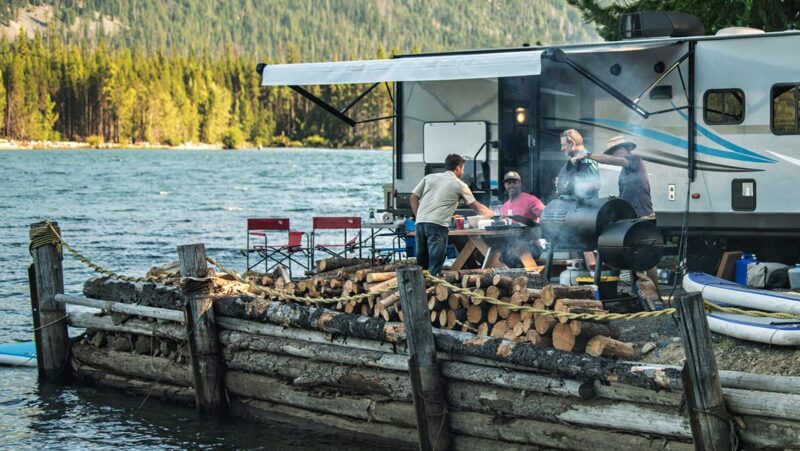
Entertainment
Electronics
Depending on your RV WiFi situation, you may or may not decide that it’s worth it to bring along a ton of electronics. Still, if you have work to do or kids to entertain, bringing a laptop and charger is probably a good idea. Don’t forget to download any movies or TV shows you want to watch before you leave to save battery life.
Some other products for entertainment that RVers favor are a portable stereo, headphones, e-readers, tablets, and an outdoor movie projector.
Indoor Entertainment Ideas for RVing
There are many ways to entertain yourself indoors on a rainy day while RVing. Consider bringing along books, board games, a deck of cards, a yoga mat, an arts and crafts box, and coloring books.
The Best Games for Camping and RVing
Outdoor Entertainment Ideas for RVing
Outdoor entertainment is endless. Some RV camping favorites to bring include binoculars, hammock, volleyball net, sports balls, badminton, squirt guns, bird watching kit, pool floats or boogie boards, goggles, and comfy camp chairs.
Kitchen Essentials
For easy kitchen packing, put some thought into meal planning to help make sure you bring the essentials—and skip the unnecessary.
Refrigerator
An RV refrigerator and a normal refrigerator are not the same. Your RV refrigerator needs proper ventilation to work properly, so it should never be overstuffed with items, and you’ll want to use an RV fridge cooling fan. You also should organize your items based on weight. Heavy stuff should go at the bottom of the fridge, and lighter stuff should go on top. Use a level to check that the fridge is balanced.
You need to take extra care to make sure that your refrigerator door stays closed while on the road with RV refrigerator tension bars that are created specifically for this purpose. Bungee cords also come in handy. Avoid storing easily spillable liquids in your fridge and store everything in airtight containers.
Remember that an RV refrigerator is subject to the outside temperature, so you need to keep an eye on the refrigerator’s temperature and adjust it based on how hot or cold it is outside. It might be a good idea to have some extra ice on hand in a cooler if you’re going to be traveling during hot summer days. In extreme heat, you cannot always rely on your RV to stay cold enough to protect your meat and frozen foods.
Food
Your RV food list won’t differ too much from your typical grocery list, except it will depend a little more heavily on non-perishable and canned items.
Outdoor Cooking
For outdoor cooking, you can’t go wrong with a Dutch oven for any over-the-fire meals you want to make. You’ll also want a cast-iron skillet, a camp stove, or an electric skillet or griddle. Skewers are useful when grilling, and they can double as s’more sticks.
Clean-up and Storage
The easiest way to eat while camping is to use paper plates, napkins, and plasticware. However, reusable tableware is the more environmentally responsible choice. Make sure you bring dish soap, sponges, and a drying rack for all clean-up, as well as paper towels.
For storing food, you’ll want all the basics—aluminum foil, plastic wrap, baggies, and reusable containers.
Cookware and Utensils
Cookware is heavy, cumbersome, and sometimes breakable, so many RVers only pack the bare minimum. For most campers, this just means a few pots and pans, a coffee maker, a baking dish, a baking sheet, and anything extra you need for the kids. The utensils you’ll need depend on your food list and how often you plan to eat outside. Some staples include a spatula, tongs, serving spoons, serving trays, a salad bowl, and a wooden spoon. And don’t forget a can opener and probe thermometer.
Must-Have RV Kitchen Accessories

Packing for Kids and Pets
There’s nothing better than bringing your kids or furry friends along for an RV adventure and watching them experience camping and exploring. However, there are some added concerns that you need to be aware of when it comes to packing for and traveling with kids and pets.
Having kids and pets with you means more people (and animals) to manage and organize in the RV. Keep things organized and easily accessible for the family by storing items in clear, transparent containers so everyone can easily find their clothes, toys, and gear.
The Ultimate Guide to Boondocking With Kids
Invest in packing extra clothes since kids tend to soil their clothing (and yours) more quickly. And, of course, if you have babies or young children with you on the road, add diapers, wipes, bottles and a bottle washer, and baby sleep gear.
You can find some pretty cool kids’ packs that are specifically geared toward bringing kids along on camping trips, and you can find kid-sized camping pads and other camping gear.
For pets, make sure you travel with their vaccine records and necessary pet gear like a crate, leash, harness, bowls, food, travel bed, grooming supplies, water bottle, necessary medication, waste bags, wipes, a pet first aid kit, a tick remover, and a life jacket. Other pet-recommended gear for camping includes a hose attachment for easy bath time, a tie-out cable, and a temperature monitoring device for when your pet can’t tag along.
Checklist
RV Essentials
- Road atlas
- Water tank filled (at least halfway)
- Drain hose
- Levels and leveling kit
- Gas tank filled
- Spare oil
- Tools necessary for on-the-road fixes
- Emergency light kit
- Jumper cables
- Adapters
- Water pressure regulator
- RV fridge cooling fan
- Bungee cords
- Black tank treatment, disposable gloves, and sewer hose/attachments
For the Campsite
- Camping chairs
- Hammock
- Deck of cards
- Board games
- Fishing gear (and fishing license)
- Drawing tools
- Hiking maps
- Mountain bikes
- Yoga mat
- Kayaks, canoes, or paddleboards
- Camera
- Yard games
- Headphones or a speaker
- Portable movie projector
- Books
- Axe for splitting wood
- Tent with camping pads and sleeping bags
- Pool floats and goggles
Personal Items and Toiletries
- Phone charger
- Wallet
- IDs and driver’s license
- First aid kit
- Sun protection and aloe vera
- Bug spray
- Bear spray (if you’re in bear country)
- Sewing kit
- Headlamp or flashlight
- Extra batteries
- Watch
- Sunglasses
- Reservation paperwork
- RV manual and RV maintenance history
- Prescription medications
- Contacts and lens solution
- Deodorant
- Toothbrush and toothpaste
- Floss
- Lip balm
- Body soap
- Shampoo and conditioner
- Hairbrush
- Nail clippers
- Lotion
- Ear plugs
- Sleep mask
- Travel-sized steamer
- RV toilet paper
Clothing
- Rain jacket and pants
- Hats
- Sun hat
- Baseball cap
- Beanie
- Shoes
- Hiking shoes
- Water shoes
- Sandals
- Slippers
- Casual shoes
- Sweaters or hoodies
- Socks
- Underwear
- Heavy jacket
- Light jacket
- Short and long-sleeve shirts
- Shorts and pants
- Swimsuit
- Pajamas
Linens
- Sheets
- Blankets
- Pillows and pillowcases
- Towels
Kitchen and Cooking
- Food and drink (be aware of high prices near campgrounds)
- Spices
- Oil or butter
- Frying pan or skillet
- Saucepan
- Collander
- Measuring cups/spoons
- Grill or griddle
- Plates and bowls
- Cups and mugs
- Forks, knives, spoons
- Spatula
- Tongs
- Serving spoons
- Probe thermometer
- Wisk
- Can opener
- Bottle/wine opener
- Cutting board and knife
- Paper towels
- Disposable cleaning wipes
- Trash bags
- Ziploc bags
- Tinfoil
- Dish tub
- Dish soap
- Sponge
- Potholders
- Dishtowels
- Coffee maker
- Cooler (if you don’t have a fridge)
Pets
- Vaccine records and medication
- Crate and/or dog car seat
- Leash, harness, and tie-out cable
- Bowls and food
- Travel bed
- Grooming supplies and wipes
- Waste bags
- Pet first aid kit and tick remover
- Life jacket
- Temperature monitoring device
Packing for an RV outing can be overwhelming at first, but with this guide and handy checklists, you’re already well on your way to becoming an RV packing pro.
This article has links to products that were carefully selected by our editors. We may earn commission on your purchases from these links.
